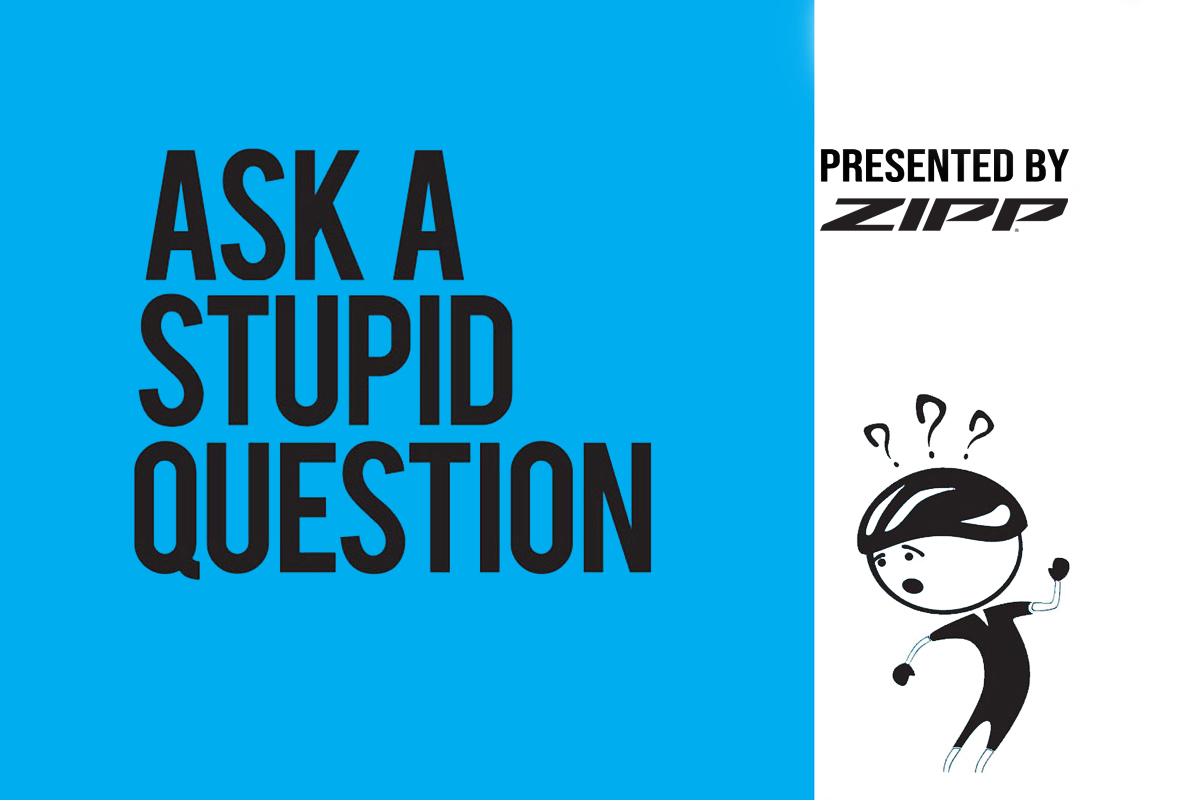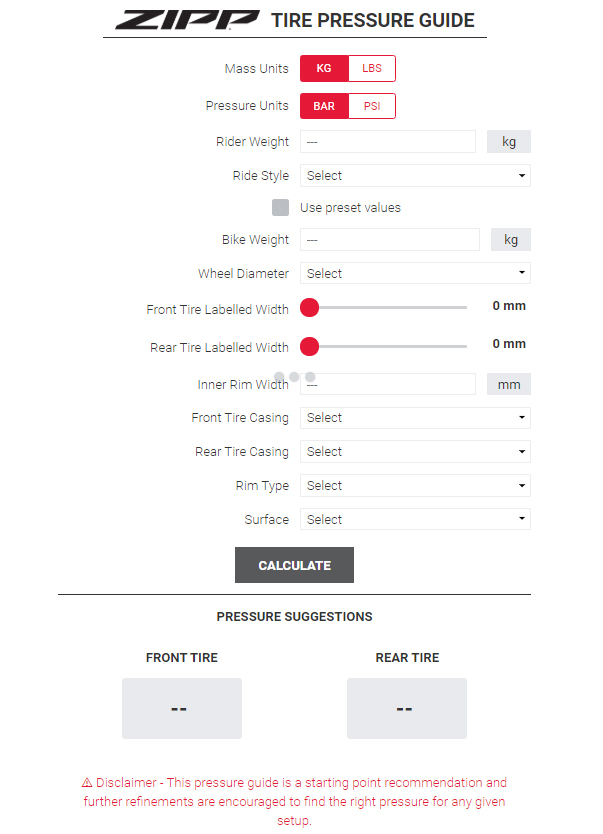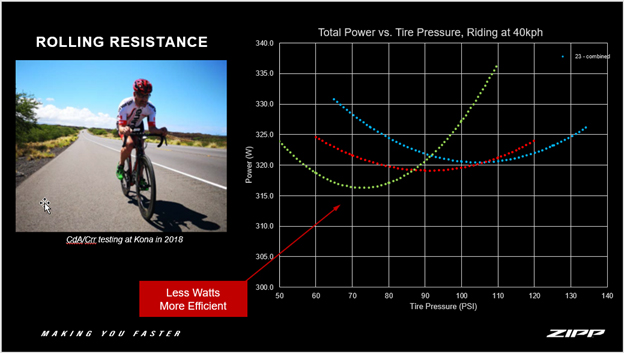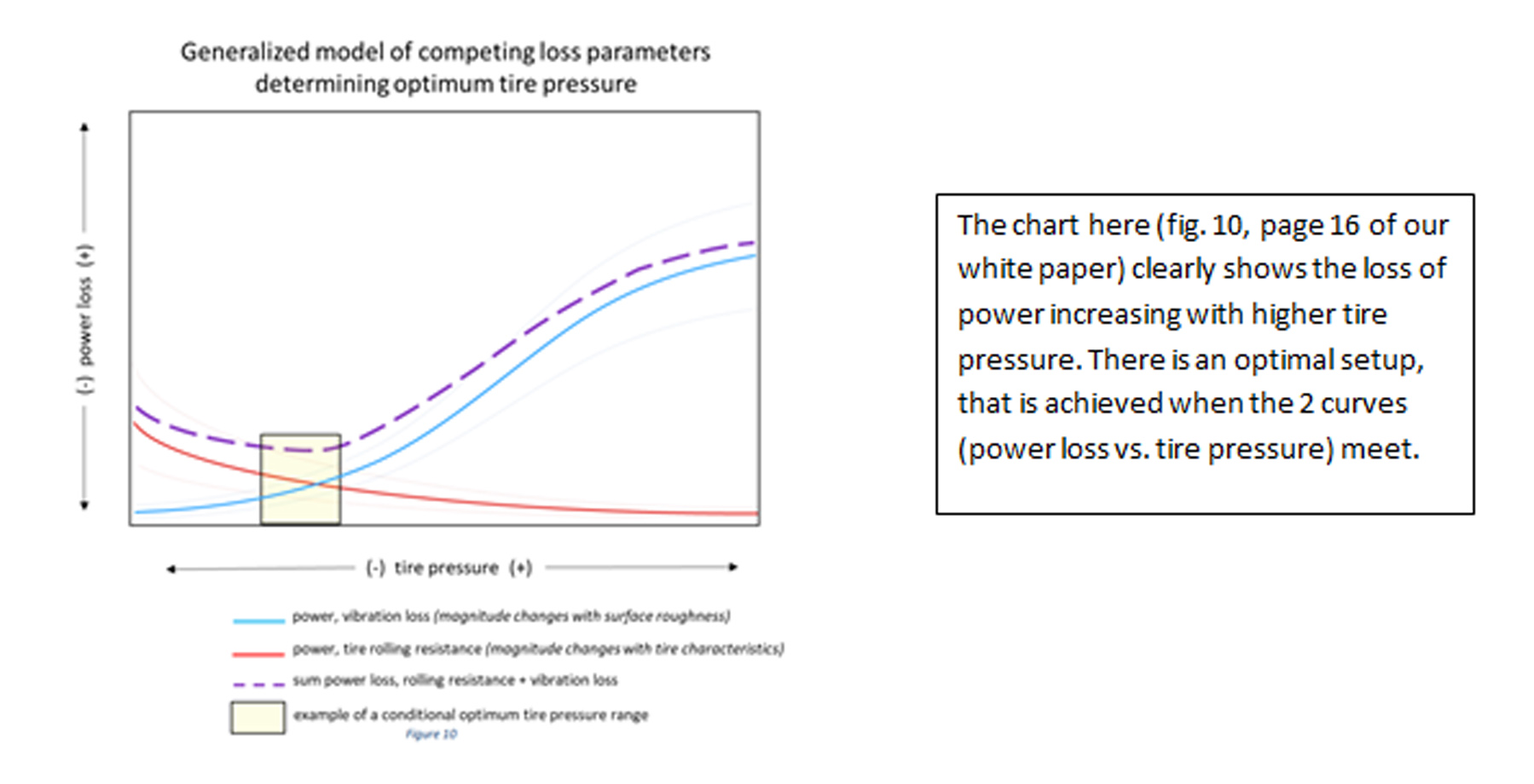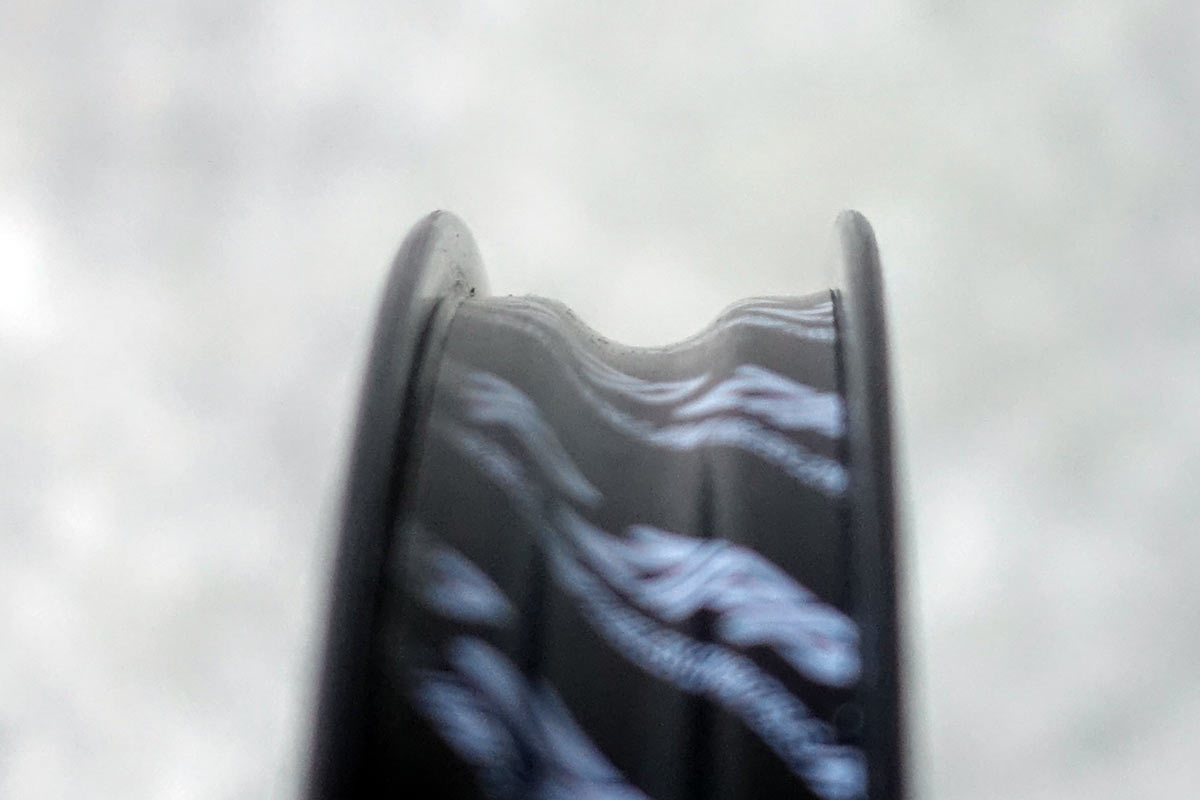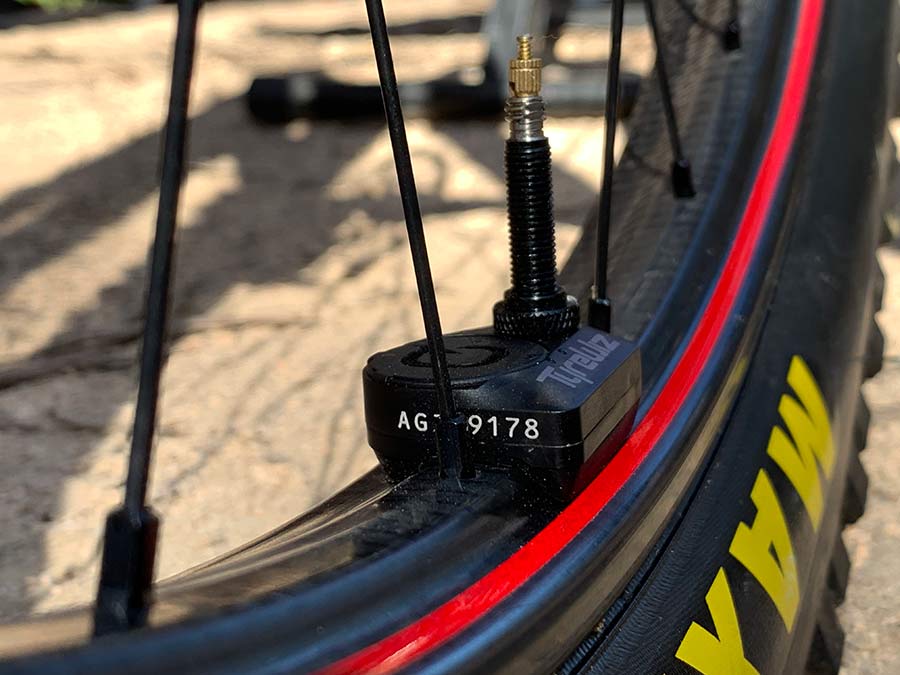We know, there’s no such thing as a stupid question. But there are some questions you might not want to ask your local shop or riding buddies. AASQ is our weekly series where we get to the bottom of your questions – serious or otherwise. This week it’s all about tire pressures, higher volume tires, and wider rims with Zipp! This is a long one, so we’re jumping right in:
General tire pressure
Hi BR team, I love this Q&A format, some have been very informative. Seeing this upcoming Zipp Q&A I tested this very morning their pressure recommendation, they were recommending less than 5 bars for my 26mm set-up… pinched on the first pot-hole (and that was really not a big one, more a rough pavement joint) I hit. Now thinking about it I realize how little sense those numbers make for normal road-conditions or is there something I missed? Furthermore the bike felt quite sluggish. – Caesare
Zipp: Hello Caesare. We have published some charts that specifically refer to the new 303 Firecrest disc brake and 303 S disc brake wheel which have a wide rim bed width and are tubeless specific. If using these charts, it is important to know the pressure indicated on those charts should not be used for any other setup. However, you may be referring to the Zipp Tire Pressure Guide on the SRAM AXS website which takes a number of additional parameters into account to calculate tire pressure.
It is important that all information is entered appropriately into the guide to get the correct recommendation – rim width, tire size, type of tire, tire interface on the rim, riding conditions, surface, etc… Be sure all information is entered correctly in order to get the most accurate tire pressure recommendation. Note though that pressures we recommend are lower than you may be used to because our Total System Efficiency (TSE) study is clearly showing lower pressures are more efficient on all surfaces. You can find more information on our Total System Efficiency study here.
Can all tires be run at lower pressures?
Zipp: All tires should be run at the adequate pressure – some will be capable of lower pressures than others. It depends on your complete set-up: a large tubeless tire on a wide rim will allow lower pressure without squirm than a narrow tube-type clincher tire on a narrow rim.
In general, we cyclists have been inflating our tires too much over too long; and it is time that we all come back to more appropriate measures. We suggest using a starting point, and slowly lower air pressure a few psi at a time to experiment with what air pressure is best for you. You can start with using the Zipp Tire Pressure Guide as a baseline. With overall efficiency savings, appropriately lower tire pressure is just faster!
My non-tubeless carbon road/gravel rims have a maximum pressure recommendation of 90 psi for 28mm tires. However, my tires have a minimum psi recommendation of 95. Which should I follow? As an aside I weigh 175 pounds and have been riding at 80-85 psi with no issues on typical urban street surfaces. – Larry
Zipp: Hey Larry. Our position on this question is clear. If the minimum pressure for a tire is higher than the maximum pressure for a rim, then the 2 should not be used together – in other words, they are incompatible. In your case, the minimum pressure for your tire feels really conservative. 95psi is a lot of air in a 28mm tire, by today’s standards.
Do the pressure charts apply when using tubes? Or is there a general rule to apply when running tubes in a hookless setup? – David
Zipp: The pressure charts that you might have seen published only apply to our wider rim bed 303 Firecrest disc brake and 303 S disc brake wheels with tubeless tires. However, we also offer a digital pressure guide that provides recommendations for any type of setup – just select the options in the drop down menu at the tire pressure guide.
As far as using tubes in a hookless set up: if your tire has tubeless beads, you can safely use a tube 100% of the time in a hookless rim set up. This allows for those who do not want to manage the sealant requirements of a tubeless set up run a tube in a tubeless, hookless rim scenario.
So, why not just lower your tire pressure until you are bottoming out or you feel too much squirm and then pump up until the problem goes away? – Chris
Zipp: Hi Chris. Your method is a little extreme, and we would not go as far as bottoming out the rims but this is the general approach to figuring out what works best for your set up. Our digital pressure guide can take some of the guesswork away by providing a starting point. After, users should feel free to adjust pressure as needed for their personal riding style and environment. You can hear us go into a deep dive on air pressure here at our Zipp podcast.
Surface Specific Tire Pressure Considerations
A lot of the data you published regarding the “wide-low pressure is more efficient” seems to take conditions that are not “the normal road riding” but anything that would be what in Europe we would call “extremely degraded” roads (or gravel). So is there any gain for the guys riding on good roads? – Jordi
Zipp: It is true that the biggest gains in efficiency with large tires and low pressure are obtained when the road surface is less optimal. However, we have also tested those set ups on perfect roads and found larger tires to be more efficient as well. Testing shows the efficiency gains to be up to 40 watts on rough roads, and about 3 watts on smooth surfaces.
Blue: 23mm tire – Red: 25mm tire – Green: 28mm tire
The reason is that power losses due to vibrations occur even on roads that qualify as good, or smooth. Asphalt is rough and creates drag – the only surface where vibrations are not a factor would be the wooden track of an indoor velodrome, for example.
There’s a lot of chat around low pressures being faster, especially over rough ground. I’ve been using Silca’s tyre pressure calculator and have found the pressures recommended to feel great (they’re pretty similar to Zipp’s recommended pressures by the look).
However, I can’t help but feel that when out of the saddle,, and especially when sprinting, the increased squish of the tyres as the rider’s weight moves up/down and side to side would add quite a bit of resistance. Has that been tested at all? – Danny
Zipp: Thanks Danny. Yes – lower pressures really do help, on rough roads but also on smooth surfaces. The thing is, most of us cyclists have been inflating our tires to their max pressure for so long that the feel of over-inflated tires is ingrained in us. As a result, getting back to more appropriate pressures is going to take some getting used to. The potential loss of power when sprinting out of the saddle is negligible when compared to the gains in rolling efficiency and vibration damping. We suggest using a starting point, and slowly lower air pressure a few psi at a time to experiment with what air pressure is best for you. You can start with using the Zipp Tire Pressure Guide as a baseline.
Zipp’s Pressure Caluclator
Hi BR and Zipp team, just discovered the tire-pressure calculator and gave it a try. Are you really suggesting that for road practice with 25mm tires on your 303 (the 19mm inner, not the new very wide) you recommend less than 3.5 bar??? out of curiosity I had a ride at 4 bars and it’s not really rideable, yes it’s comfy but deflects a lot and bike is not “responsive”. Is this model really for road or for gravel? Follow-up question… just realized the wide 303 are limited to 5bar max, isn’t this a technical limitation to have hookless to work (do not sustain high pressure)? on the the good road I have nearby with 25mm tires @5bar (or even with 28mm) I am leaving quite some watts there. Aren’t those wheels then more gravel exclusive rather than road-gravel (or then a road at a quiet pace)? Thanks, Brent
Zipp: Brent – 3.5 bars is indeed low for your set up. For 25mm tires on a 19mm rim, with tube-type tires, a 7kg bike and a 70kg rider, our digital pressure guide is showing about 5.5 bars as the recommended pressure. There are a lot of parameters that need to be entered correctly in the guide, maybe give it another try. It is possible for the guide to suggest 3.5 bars in 25mm tires – if the rider is 35kg, the bike 6.8kg, and the rims are hookless, tubeless and 23mm wide.
To your second point, the 5 bars limit is indeed a limitation that is imposed by conservative regulatory norms, not what we have seen in our own tests. However, the same tests are showing that wide rims / large tubeless tires and low pressure are providing large gains in efficiency over any surface, not just gravel. Yes, the new 303 Firecrest Disc-brake is a great wheel on gravel, but it is primarily a fantastic road wheel; it will be fastest with a 28mm tire. Our team of engineers is a fast bunch, and they like to experience what we promote. We have documented example of them racing the PRT Crit Series here in the US, on 303 Firecrest Disc-brake wheels and 28mm tires inflated at 50 psi (3.44 bars).
Feel free to learn more on Total System Efficiency with our white paper, available here.
Are Zipp’s tire pressure calculations specifically for your wheels and tires? Or can they be used for other brands?
Zipp: The published charts that you may have seen only apply to our new 303 Firecrest disc brake and 303 S disc brake wheels with tubeless tires. However, we also offer a digital tire pressure guide that can be used for all brands and set-ups. There are several important parameters that must be entered to get an accurate recommendation. The tool allows for user entry of important information: data analysis of rider weight, wheel diameter, tire width, inner rim width, tire casing type, rim type, and riding conditions to help calculate an approximate tire pressure that may be ideal for you. Once you are given a value, feel free to adjust as necessary to your riding style and environment. You can hear us go into a deep dive on air pressure here at our Zipp podcast.
Your recommended pressure from the calculator appears extremely low: 3.5bars for 70kg rolling system in 25mm tires on 19mm rims like your 303 for road usage). Leaving aside it’s below the minimum recommended pressure from many tires, it will also not survive the first pothole. In terms of bike behavior I tried @4.5bars (26mm measured tires) and the bike feels it took a xanax… if you still recommend those extreme low pressure for good roads where are the “gains”? do you suggest that even on very good roads there are losses that compensate the RR or tire deflection when accelerating?
thanks! – Jord
Zipp: Hey Jord – 3.5 bar feels low for your set up. For 25mm tires on a 19mm rim, with tube-type tires, a 7kg bike and a 63kg rider, our guide is showing above 5 bars as the recommended pressure. There are a lot of parameters that need to be entered correctly in the guide, maybe give it another try?
It is possible that your bike feels slow at those pressure because most of us cyclists have been inflating our tires to their max pressure for so long. We are very accustomed to the ingrained feel of over-inflated tires. As a result, getting back to more appropriate pressure is going to take some getting used to.
While the feeling on the road is certainly different, the test results are clear: lower pressure provides real gains on all surfaces. Feel free to head over to Zipp.com and check out our Total System Efficiency page or read our white paper on the subject for more detailed information.
Rolling resistance is decreased with wide tires and low pressure. In addition, the damping of vibrations you get from those set ups can save you up to 40 watts on rough roads, and up to 3 watts on smooth roads.
The reason for these savings even with a lower pressure are that power losses due to vibrations occur even on roads that qualify as good, or smooth. Asphalt is rough and creates drag – the only surface where vibrations are not a factor would be for instance the wooden track of an indoor velodrome.
Silca’s Tire Pressure Calculator vs. the Zipp Calculator
The Silca calculator allows your pressure to differ by surface, with rougher surfaces getting lower pressure recommendations. At my weight, Zipp’s recommended general pressure is in line with Silca’s recommendation for dirt roads or poor pavement, assuming a 28mm tire has a measured width of 32mm on those Zipps (that’s a guesstimate; narrower measured width would lead Silca to spit out a higher recommended pressure). Silca recommends significantly higher pressures for even slightly worn pavement. At my weight of 133 lbs and assuming a 20 lb bike and 5 lb gear, Silca gave me 60.5 psi front, 62 rear for moderately worn pavement, 64/65.5 for new pavement. Does Zipp have anything to take different road conditions into account?
Zipp: Although we cannot comment on the Silca tool, it is nice to see that other companies are aligned with our recommendations for tire pressure. This makes a lot of sense: tire pressures should be adjusted depending on the road conditions. On rough roads, vibrations will account for a large amount of your power loss and therefore air pressures should be lowered. On smooth roads, rolling efficiency becomes more prevalent and pressures should be increased (to a point).
Our tool is a little different than Silca’s, but it is possible to adjust ride style (road, CX, Gravel…) and road surface (dry or wet). For more convenience for the user, our tool is not asking for measured width on the rim – instead it calculates from the labeled size and the internal rim width. To your point, a 28mm tire will measure between 28.5mm and 30.5mm on the new 303 Firecrest disc brake rims, depending on the manufacturer of those tires.
For standard road riding and plugging in your numbers, for a 28mm tubeless tire on our new 303 Firecrest (25mm internal width) our tool suggests 51 and 53 psi.
Your work on low pressure and the total system hysteresis loss is interesting even if not totally new, but like in the Silca work, it’s associated to very rough / extremely roads, not the majorities of the “good roads”. How does your work on pressure helps us in terms of pure-road-performance ? Few RR test published with a variety of “normal road samples” didn’t showed this degradation with pressure increase like you showed on your papers (leaving the important comfort question aside that are part of an overall performance). – Shenandoah
Zipp: The testing that led to our Total System Efficiency work started several years ago, in the real world. As an example, we conducted some coefficient rolling resistance (CRR) and coefficient of drag times surface area (CdA) tests in Kona in 2018, on a section of road used in the Ironman world championships – as represented in the picture below:
As you can see, this road is as smooth and fast as one could hope – yet the test results are still showing the large tire / low pressure system being faster overall.
We now have replicated this test in our own test lab, in order to gain control over all parameters – we call this test the RollingRoad™, and it can be set as a perfectly smooth or a really bumpy surface. You are absolutely correct that the largest benefits of our story will happen over rough roads (up to 40 watts); however our tests are clearly showing that large tires / low pressures can yield up to 3 watts savings on smooth roads as well.
The reason is that power losses due to vibrations occur even on roads that qualify as good, or smooth. Asphalt is rough and creates drag – the only surface where vibrations are not a factor would be for instance the wooden track of an indoor velodrome.
Product Specific Considerations
The New Zipp 303 S wheels look like a great wheel for gravel and/or road riders, but many of us also dabble in Cyclocross using the same bikes we ride gravel on. Obviously real measured width of tires varies from brand to brand; but in general, can we expect that *most* 33c Cyclocross tires will measure above the 33mm limit mandated for UCI events (like National/provincial/state championships) when mounted on the 303S Wheelset?
Zipp: This is an excellent point, thanks for bringing it up. Wide rims are beneficial, in that they support the tire in a way that allows lower tire pressures – which is desirable in cyclocross. However, they also spread the tire wider than usual.
If the tire follows ETRTO regulations, a 33mm tire (labeled) will likely measure over 35mm when assembled in 303 S – although it may differ depending on the model and the make of the tire). According to our calculation, you would need to find a 30mm (labeled) tire, that will measure a little over 32mm on 303 S.
All tires are different, however. We do recommend you verify your setup before heading out to the races.
Assuming the tire width stays the same, how does rim width affect recommended tire pressure? Are those the same pressures for hooked and hookless?
Zipp: Thank you very much for this question – the effects of rim width and tire interface on tire pressure are being largely overlooked by a majority of cyclists. Wide rim profiles increase the volume in the tire, as well as provide more support to the side walls. This has the same effect as changing the spring in a coil shock for instance: the spring rate of your tire becomes different.
It is easy to dismiss those effects as insignificant, but they are consequential. The reason we can afford such low pressure in our new 303 Firecrest disc brake and 303 S disc brake wheels are specifically due to their wide profile: the increased volume and support to the tire is the reason it is possible to run such low pressures, without any deflection or loss of rolling resistance.
Following the same logic, it is important for cyclists on wide rims to run lower pressure: if they run the same high air pressure they are used to, the ride experience in a wide rim will be terrible. The wheels will feel harsh, bouncy, and uncomfortable.
The hookless profile works the same way: traditional hooks “pinch” the base of the tire, thus reducing its volume, and creating a weakness at the base. This promotes tire deflection and squirm, something cyclists have traditionally offset with higher air pressure. Hookless rims have the tire sidewalls seat straight near the wings of the rim, for maximum support, thus allowing lower pressure.
In summary: the wider the rim, the lower your air pressure should be. Hookless rims should also be inflated at a lower pressure than hooked rims.
I’ve read about comparisons between wheels and sailing over the years. Buzzwords like “sail effect”, “propulsion” and “negative drag”. Pretty sure Zipp has used some of these long ago with the Sub 9 disc. I don’t see you using them on your latest range whereas other wheel brands do. Is there a certain wind angle that would allow a wheel to achieve negative drag or propulsion? And if so, where does this rank in the total system efficiency equation? – Erica
Zipp: Propulsion drag is not real. We realized this in our own testing a long time ago after adjusting our testing protocol in the wind tunnel. It is actually possible to obtain a negative drag reading in the wind tunnel, depending on the conditions of your test; however, the laws of physics dictate that negative drag, or propulsion, or sail effect is just impossible in the real world. This is the reason we stopped using this concept in our marketing.
I have a set of 303 Firecrests circa 2015 or 2016. I cannot run larger than 25’s due to frame clearance. I am 6’4” 210lbs. Typically I run 100-105psi rear and 90-95 psi front with tubes. Two questions:
Can I convert this wheel set to tubeless?
Sorry Wyatt – this is not an option. Those wheels are not designed for a tubeless setup. Such a conversion would put your safety in jeopardy.
What pressure should I run with tubes? Without tubes (if it is an option)? – Wyatt
Zipp: We offer a convenient digital tire pressure guide, and plugging in your numbers, the recommended pressure for you for tube-type tires is 93 psi on the front and 99 psi on the back. So you are pretty close to the ideal already – good job!
Are there now available, or will there be an alternative TyreWiz valve stem that includes a sealant baffle feature, allowing proper TyreWiz compatibility with tire inserts installed on 3zero Moto wheels? – Russ
Zipp: Hey Russ – the standard TyreWiz can be installed on top of your valve stem, and therefore should work properly with any tire insert. Unfortunately, we do not plan to create a variant of the TyreWiz for Moto that is compatible with tire inserts.
What tubeless sealant does Zipp recommend for your wheels?
Zipp: Zipp has no preference in tire sealant. That choice should be dictated by your tire supplier and their limitation in material compatibility. We all have our personal favorite brands, but our wheels are not affected by sealant and you should feel free to use what works best for you.
